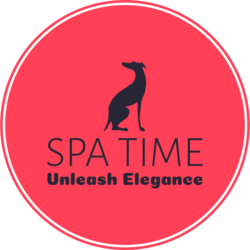Essential Puppy Grooming Tips Every Owner Should Know
- SPA TIME

- 6 days ago
- 3 min read
Bringing a puppy into your home is an exciting and joyful experience. Along with the fun comes the responsibility of caring for your new furry friend, and grooming is a key part of that care. Proper grooming helps keep your puppy healthy, comfortable, and looking their best. It also strengthens the bond between you and your dog. This guide will walk you through essential young dog grooming tips to help you start your puppy off on the right paw.
Understanding Young Dog Grooming Tips: Why It Matters
Grooming is more than just making your puppy look cute. It plays a vital role in their overall health and well-being. Regular grooming helps prevent skin infections, reduces shedding, and keeps your puppy’s coat shiny and clean. It also allows you to check for any abnormalities such as lumps, bumps, or parasites like ticks and fleas.
Starting grooming early helps your puppy get used to the process, making it easier as they grow. Puppies that are groomed regularly tend to be calmer and more cooperative during grooming sessions. This early exposure also helps reduce anxiety and fear related to grooming tools and handling.
Key Benefits of Grooming Your Puppy
Health monitoring: Spot skin issues or parasites early.
Comfort: Prevent mats and tangles that can cause pain.
Hygiene: Keep ears, teeth, and nails clean to avoid infections.
Bonding: Build trust and a positive relationship with your puppy.

Essential Young Dog Grooming Tips for Beginners
Starting with the right tools and techniques is crucial for successful grooming. Here are some practical tips to help you get started:
1. Choose the Right Grooming Tools
Invest in quality grooming tools suited for your puppy’s coat type. Common tools include:
Brushes and combs: Slicker brushes for long-haired breeds, bristle brushes for short-haired dogs.
Nail clippers: Use a sharp, safe clipper designed for puppies.
Shampoo: Use a gentle, puppy-specific shampoo to avoid skin irritation.
Ear cleaner: A vet-approved solution to keep ears clean and dry.
2. Create a Calm Environment
Choose a quiet, comfortable space for grooming. Use treats and praise to make the experience positive. Keep sessions short at first, gradually increasing the time as your puppy becomes more comfortable.
3. Start with Brushing
Brushing removes loose fur and prevents mats. For long-haired puppies, brush daily. Short-haired breeds may only need brushing once or twice a week. Always brush gently to avoid hurting your puppy.
4. Nail Care
Trim your puppy’s nails regularly to prevent overgrowth and discomfort. If you’re unsure, ask your vet or groomer to show you the correct technique. Avoid cutting too close to the quick, which can cause bleeding.
5. Bathing Basics
Bathe your puppy only when necessary, usually every 4-6 weeks. Use lukewarm water and puppy shampoo. Rinse thoroughly to remove all soap residue. Dry your puppy with a towel or a low-heat hairdryer.

How to Make Grooming a Positive Experience for Your Puppy
Grooming should be a bonding time, not a stressful chore. Here are some ways to make grooming enjoyable:
Use treats and praise: Reward your puppy during and after grooming.
Be patient: Take breaks if your puppy becomes restless.
Introduce tools slowly: Let your puppy sniff and explore brushes and clippers before using them.
Keep a routine: Regular grooming helps your puppy know what to expect.
Common Grooming Challenges and How to Overcome Them
Even with the best intentions, grooming can sometimes be tricky. Here are common issues and solutions:
Puppy resists brushing: Try shorter sessions and use treats to encourage cooperation.
Nail trimming fear: Use a nail grinder instead of clippers or have a second person help hold your puppy.
Ear cleaning resistance: Use a soft cloth instead of cotton swabs and be gentle.
Bath time anxiety: Use non-slip mats in the bath and keep water temperature comfortable.
Additional Tips for Specific Coat Types
Different breeds require different grooming approaches. Here are some quick tips:
Long-haired breeds: Brush daily to prevent tangles and mats.
Short-haired breeds: Weekly brushing is usually enough.
Curly coats: Regular trimming and professional grooming may be necessary.
Double coats: Brush more frequently during shedding seasons to remove loose undercoat.
For more detailed puppy grooming tips, you can visit this helpful resource.
Building a Lifelong Grooming Routine
Consistency is key to maintaining your puppy’s health and happiness. Establish a grooming schedule that fits your lifestyle and stick to it. Regular grooming sessions will help your puppy grow into a well-groomed adult dog.
Remember to keep grooming positive and stress-free. Celebrate small successes and be patient with your puppy’s learning curve. Over time, grooming will become a natural and enjoyable part of your routine.
By following these essential young dog grooming tips, you are setting your puppy up for a lifetime of good health and happiness. Happy grooming!



Comments